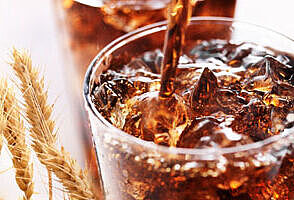27. September 2020
Malt extract – natural, intensive brown tones for innovative products
Brown is one of the most important colours in the food industry. It is produced naturally, for example, when baking bread or roasting onions, but also when grilling steaks. The artificial colourings or technological additives which are often used to colour food brown are now less acceptable to consumers, so the market is increasingly researching natural alternatives.
The path to the right colour leads from the sustainable cultivation of high-quality raw materials and their gentle processing with modern, sustainable technologies to the development of tailor-made colour solutions for every food and beverage application. As a global manufacturer, marketer and provider of technology-driven natural ingredients, ingredient systems and integrated solutions for the food and beverage industry, Döhler offers a wide range of natural colours and colouring food, including a natural brown.
Colours attract attention, trigger emotions and generate expectations
Colour enriches our everyday life. From the view of a picturesque landscape to the tantalising sight of an excellent meal, shades of colour influence our mood and our expectations. Therefore, the first perceivable property of a product is its colour. It not only attracts our attention, but also contributes to the anticipation and expectation of the taste and texture of our food. In this way, a perfectly selected colour shade can have a decisive influence on the consumer's buying behaviour. This is why colours play a unique role in the food and beverage industry and are increasingly becoming the focus of attention.
With naturalness to success
Whether brioche, cola or malt beverages – in many applications, “brown” is added as a food colourant. The most commonly used additives for brown colouring are caramel colourings (E150 a-d), mixtures of natural or artificial red and green food colourants, brown iron oxide (E172), or the artificial colour brown HT (E155). But plant extracts such as apple extract are also used on a small scale for brown colouring. However, all these options have the following in common: they are less and less accepted by consumers, their technological applicability is limited, they are only approved for certain food categories, or their global applicability is not given. Therefore, natural colour solutions which do not present these disadvantages are more in demand than ever.
Naturalness is becoming increasingly important when it comes to developing innovative food and beverages. Technological additives, on the other hand, are perceived by consumers as non-natural. Global branded companies have recognised the consumer demand for natural alternatives and must offer new solutions to meet consumers’ expectations. Therefore, manufacturers demand product solutions that not only offer high stability during processing, storage and product, but are also sustainably produced and allow for clean label declaration.
Döhler, the specialist for natural colour solutions
Döhler's Natural Colouring Malt Extract is characterised by particularly high colour stability and is suitable for all types of alcoholic and non-alcoholic beverages as well as confectionery, dairy and bakery products. As the colouring extracts only have to be declared as ingredients and not as additives, a natural clean label declaration without E-number is possible. The clean label concentrate can be used as a substitute for sugar caramel E150 c/d and scores points for its particularly neutral taste.
Malt extract convinces all along the line
Malt extract has many advantages compared to the processes commonly used in food production. Thanks to its very high colour stability, malt extract can be used for beverage applications such as beer as well as for breakfast cereals or extruded snacks. Malt extract is an ideal ingredient, especially combined with cereals and baked goods such as wafers, muffins, bread or burger buns, as it has a positive effect on the colouring at higher dosages as well as on the taste. Malt extract can also score points in pet food as a substitute for the unpopular brown iron oxide, as it does not have an abrasive or corrosive effect on the equipment. Malt extract is also very advantageous for use in hard caramels, wine gums and chewy sweets. The long shelf life of these products poses no problems whatsoever, as malt extract has an excellent light and storage stability comparable to caramel colouring.
Labelling of malt extract on the packaging
From a labelling point of view, malt extract is not an additive or food colouring, but a colouring food and must be labelled as such. However, since malt extract is obtained from barley which is a gluten-containing cereal, this has to be taken into account in the labelling even in the case of malt extracts certified as gluten-free, e.g. by writing in capital letters: MALT EXTRACT. Starches and glucoses obtained from wheat or barley are not subject to separate labelling requirements. Nevertheless, consumers would like to see an additive, i.e. a food colouring with an E-number, replaced by a natural ingredient.




